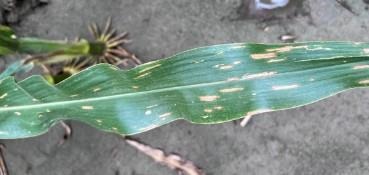Over the weekend, federal agriculture officials reported the first highly pathogenic avian flu outbreaks in Alaska and Oklahoma, raising the number of affected states to 32.

Also, the US Centers for Disease Control and Prevention (CDC) issued recommendations to help health departments investigate and response to potential human cases, and earlier-affected states, several of them in the Midwest, reported more outbreak in poultry.
Nearly two thirds of states now affected
The outbreak in Alaska struck a backyard flock in Matanuska-Susitna Borough, part of the Anchorage metropolitan area, according to an Apr 30 statement from the US Department of Agriculture (USDA) Animal and Plant Health Inspection Service (APHIS). The facility houses 30 birds.
Prior to the poultry outbreak, no wild-bird positive test results had been reported from Alaska.
Yesterday, APHIS announced Oklahoma's first outbreak, which involves a commercial chicken breeder flock in Sequoyah County in the east central part of the state on the border with Arkansas. The flock had 13,800 birds.
Oklahoma had previously reported one H5 detection from wild bird surveillance, in a mallard found dead Payne County in late March.
Highly pathogenic avian flu has now been confirmed in 32 US states since January, or almost two thirds of states.
More outbreaks in other states
Several earlier-affected states reported more outbreaks, especially those in the Midwest. Minnesota reported 6 more outbreaks, 5 of them in backyard flocks and 1 at a commercial turkey breeding farm, raising the state's total to 66 outbreaks. The spread of the virus has led to the loss of more than 2.7 million bird, according to the Minnesota Board of Animal Health.
Wisconsin reported 2 more outbreaks in backyard birds, one in Fond du Lac County and the other in Oconto County, raising the state's total to 10. Michigan reported another outbreak in backyard birds, which occurred in Branch County. And Nebraska reported one more outbreak, which occurred in a backyard flock of 50 birds in Washington County.
In the East, Pennsylvania reported a seventh outbreak in hard-hit Lancaster County. The latest outbreak struck a commercial duck farm housing 19,300 birds.
Meanwhile, in the West, Colorado and Montana reported more outbreaks. In Colorado, the virus struck a commercial layer farm housing 1.1 million birds in Weld County, marking the state's fourth outbreak.
Montana reported three more outbreaks, all involving backyard birds and bringing the state's total to eight. Locations for the latest outbreaks were Fergus, Gallatin, and Pondera counties. Among the three locations, the virus led to the loss of 2,230 birds.
The latest outbreaks are part of overall activity linked to the Eurasian H5N1 avian flu strain, which has now resulted in the loss of 36.6 million US birds.
Human investigations, safety considerations
In the wake of the recent announcement of the first human H5 avian flu case—involving a poultry culler in Colorado who had few symptoms—the CDC a few days ago issued a Health Alert Network notice that covered recommendations for human health investigations and response.
The CDC said it's impossible to determine if the H5 virus in the patient's original respiratory sample was transient surface contamination of the man's nasal passages or the result of an infection. The agency added that public health officials are pursuing the right approach by assuming that the man was infected and taking actions to contain and treat the virus.
The CDC said birds shed the virus in their saliva, mucus, and feces, and that human infections can happen when enough virus gets into a person's eyes, nose, or mouth or is inhaled. While the overall risk to the public is low, people who have prolonged, unprotected contact with infected birds or contaminated environments are at higher risk.
The CDC urges clinicians to consider H5N1 infection in people with respiratory symptoms who have exposure to birds or potentially contaminated environments. The agency asked state health departments to notify the CDC within 24 hours of identifying a case under investigation. And it recommends that people exposed to H5N1-infected birds, even people wearing recommended personal protective equipment (PPE), be monitored for signs and symptoms starting with their first exposure, extending to 10 days after their last exposure.
The guidance also covers PPE considerations, including for backyard poultry owners, and preventive medication and antiviral treatment.
Source : umn.edu